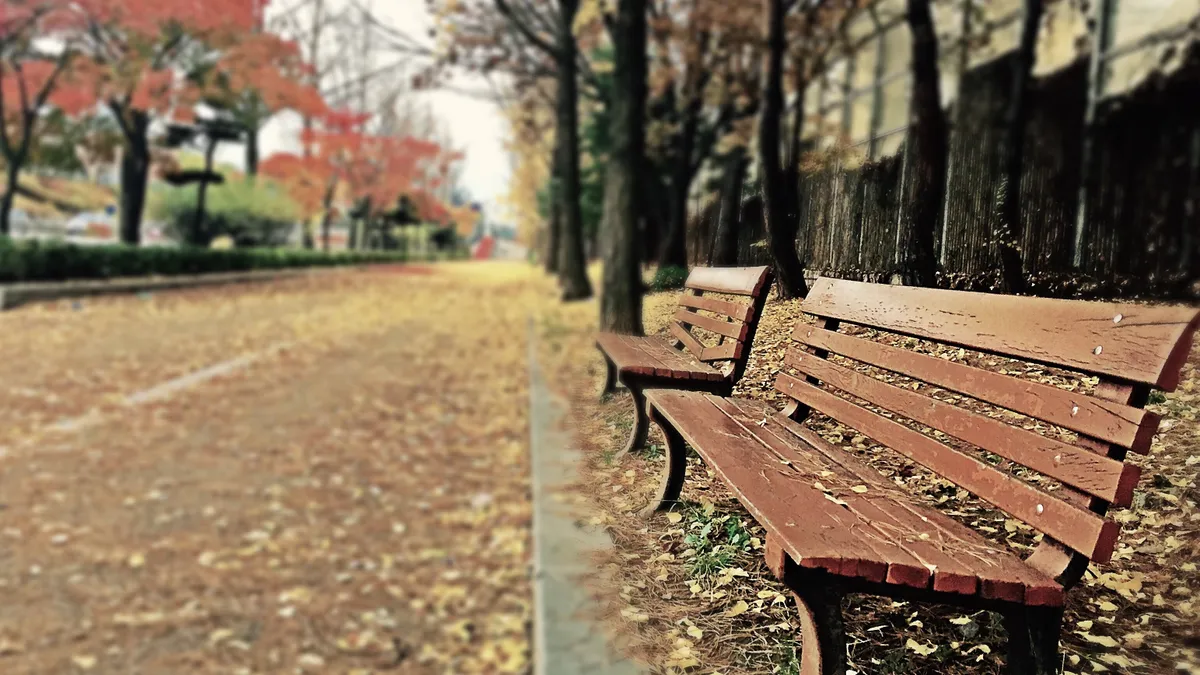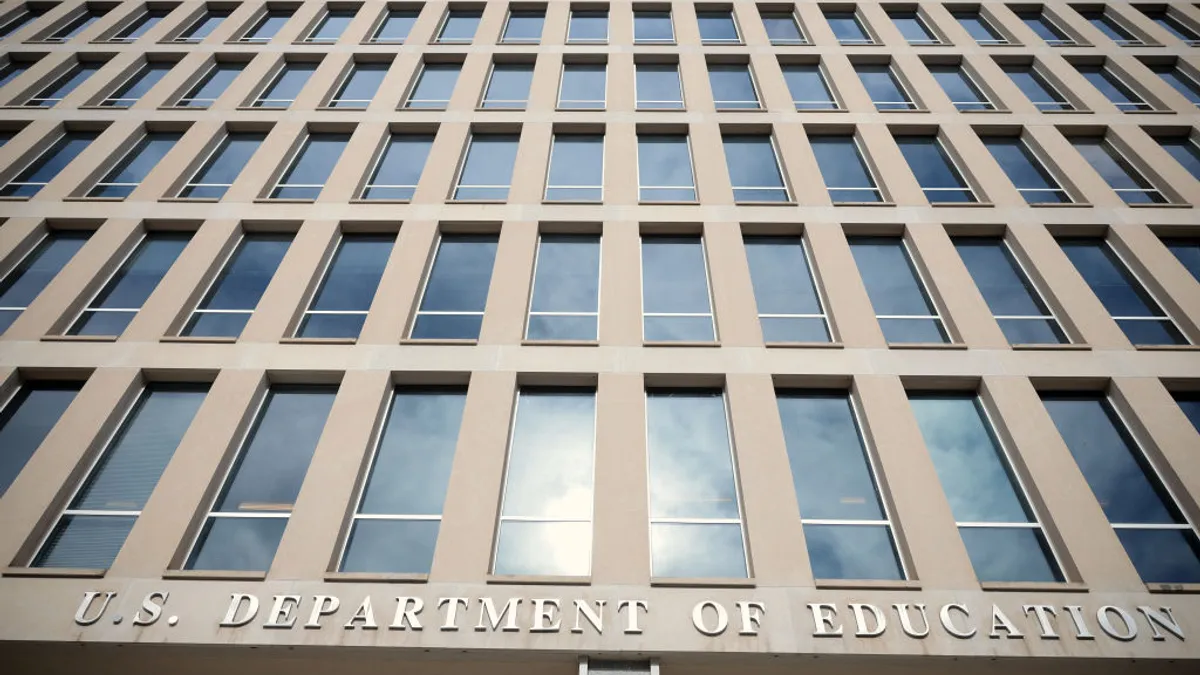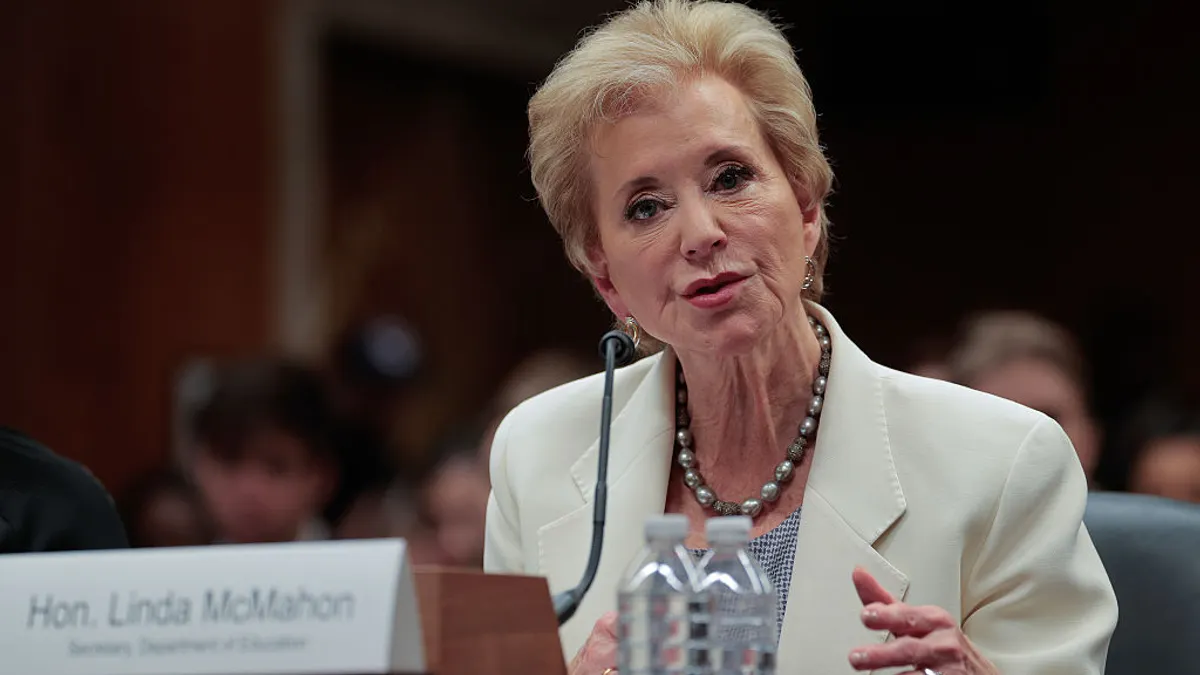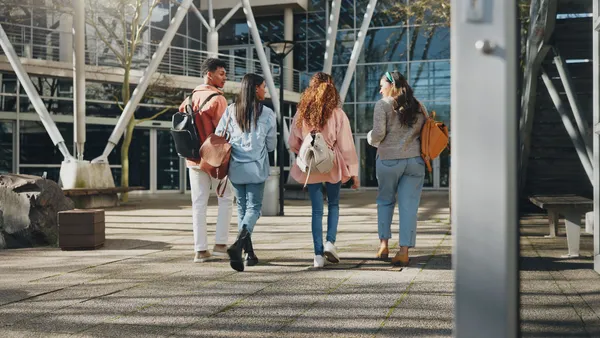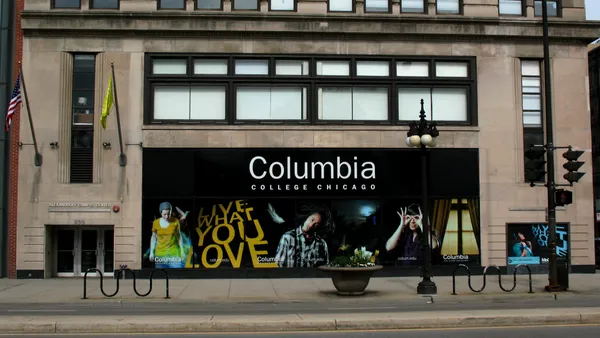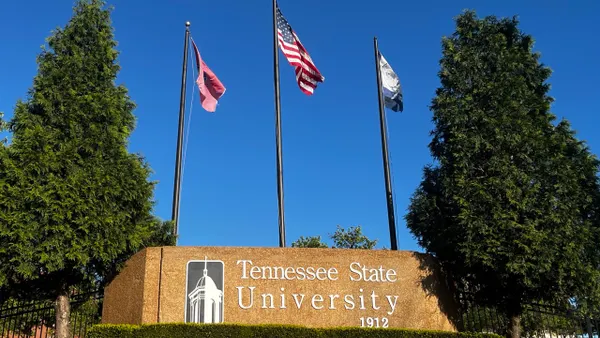Editor's note: The National Student Clearinghouse Research Center on Thursday said there was a "process error" in the data release covered in this story. The Clearinghouse issued updated figures at that time which showed a 6.8% decrease in immediate college enrollment for fall 2020. Read the updated analysis here.
Dive Brief:
- The share of recent high school graduates who enrolled in college this fall fell nearly 22% from last year, according to preliminary data from the National Student Clearinghouse Research Center. That's compared to a 2.8% drop in 2019.
- Students from high-poverty and low-income high schools had the biggest drop in matriculation year-over-year, particularly at public colleges, though the pandemic had little apparent impact on graduation rates.
- College enrollment is expected to be down this fall, and early data show big decreases among first-time students.
Dive Insight:
Concerns about whether high school seniors would enroll in college were widespread this spring. To attract newcomers, colleges promoted gap year programs, and some allowed first-year students to live on campus even though classes were online.
Preliminary Clearinghouse data suggests those fears weren't unfounded. The organization noted last month that fall enrollment fell 13% among first-time college students year-over-year, compared to a 4.4% lag among all undergraduates. Those figures cover three-quarters of colleges.
The new data "puts a finer point" on how the pandemic is affecting the most disadvantaged students, said Doug Shapiro, the center's executive director. It covers a relatively small sample of students from around 2,300 high schools enrolled at some 1,500 colleges, however.
So far, 28% of 2020 high school graduates across that sample enrolled in college this fall, compared to 35% who did so last fall. That year, the share of new matriculants decreased by less than a percentage point from fall 2018.
While all subsets of high schools reported decreases this fall, those that serve mostly low-income or minority students, as well as those in urban areas, sent fewer graduates to college, widening existing enrollment gaps.

That trend reflects the pandemic's disproportionate impact. An August survey by the Pew Research Center found Black, Hispanic and Asian respondents were more likely than White participants to say they or a member of their household lost a job and/or took a pay cut because of the coronavirus. Lower-income respondents were also more likely to say the same.
Community colleges, which have experienced the brunt of the reported enrollment declines this fall, were most affected by the drop in high school matriculants. The decreases were most pronounced among students from low-income high schools, with 37% fewer enrolling this fall. Those schools also had 20% fewer 2020 graduates going on to public four-year colleges.
Last fall, the report notes, low-income high schools had a 2.3% increase in graduates enrolling at community colleges — the only area of growth for low- and high-income high schools.
Shapiro expects the overall enrollment patterns in the data to hold steady as information from more colleges and high schools is added.



